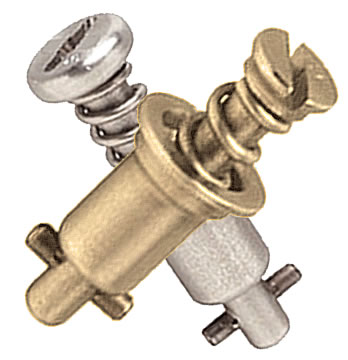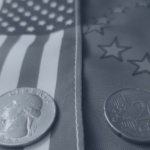When most people think of fasteners used in the aerospace industry, they envision traditional fasteners. Modern airplanes, however, are manufactured using a variety of fasteners. In addition to traditional threaded fasteners like screws and bolts, many airplanes now feature quarter-turn fasteners. How do quarter-turn fasteners differ from traditional threaded fasteners exactly?
Function
Quarter-turn fasteners work differently than traditional threaded fasteners. As the name suggests, they require a “quarter-of-the-way” turn to install. Turning them clockwise by 90 degrees will lock them in place. Quarter-turn fasteners also feature a spring mechanism to apply tension and prevent accidental release.
Ease of Removal
Quarter-turn fasteners are easier to remove than traditional threaded fasteners. Both traditional threaded fasteners and quarter-turn fasteners can be removed by turning them counterclockwise. Quarter-turn fasteners, through, only require a 90-degree counterclockwise turn, whereas traditional threaded fasteners require multiple 360-degree revolutions. Because they are so easy to remove, quarter-turn fasteners are commonly used to fasten panels that require frequent removal, such as aircraft maintenance panels.
Protection From Over-Tightening
You don’t have to worry about accidentally stripping threads or damaging components when installing quarter-turn fasteners. All quarter-turn fasteners have a built-in mechanism that limits their rotation. Once you turn them 90 degrees — either clockwise or counterclockwise — you won’t be able to turn them further. Traditional threaded fasteners, on the other hand, are susceptible to over-tightening because they lack such limits.
Load-Bearing Capacity
They may require more time and effort to install, but traditional threaded fasteners excel in high load-bearing applications. When properly torqued, for instance, a heavy-duty bolt can withstand extreme tension and vibrations. Quarter-turn fasteners aren’t as effective at withstanding loads, which is why they are typically used to secure lightweight objects like maintenance panels.
Cost
You can expect to pay more for quarter-turn fasteners than traditional threaded fasteners. They have a specialized design with a stud and a built-in spring. Traditional threaded fasteners, in comparison, have a more basic design consisting of a narrow piece of material with exterior threads.
In Conclusion
While they are both used to join two or more objects, quarter-turn fasteners and traditional threaded fasteners aren’t the same. Quarter-turn fasteners save time, prevent over-tightening and make routine maintenance more efficient. Traditional threaded fasteners, while slower to install and remove, provide the strength and load-bearing capacity needed for critical structural connections. Hopefully, this gives you a better understanding of the differences between quarter-turn fasteners and traditional threaded fasteners.























